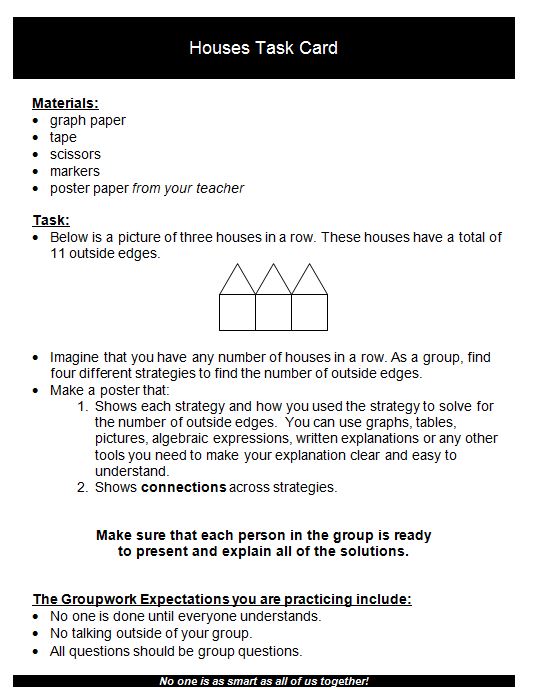How much detail should I put on a task card?
This is a question that comes up over and over for several of us. Some of us are minimalists, wanting to give students only the barebones of the task. And others feel that students need more scaffolding and support, especially as they learn about how to work well in a group. Finally, we wonder how much mathematical support students need. If a task is too barebones, do our underparticipating students (those with low status), get even fewer opportunities to participate because the task has no obvious ways in?
In order to explore this, I’d like to offer two versions of a task. One has been trimmed as much as possible and the other has been successfully used with Elementary Education majors in a mathematics content course.
I would love to hear your t houghts on these two tasks. How barebones is too much? What are some different variations on this task that might support students in different ways? For example, how might you alter this so that students who are familiar with groupwork but unfamiliar with algebra can use the task?
MORE INFORMATION ON THE TASK:
The row houses task (also known as the Houses task) was written by Mathew D. Felton-Koestler and has been used by him and others at the University of Arizona in the Mathematics Content course for Elementary Education majors.
The task focuses on algebraic patterns. Students are to determine the number of outside edges on a series of row houses. During the task, students generate and connect figures, algebraic expressions, and written descriptions.
Here is Matt’s task card:
Here is the task information sheet providing more background information:
 CI Task Information House.docxs
CI Task Information House.docxs
Here is my minimalist version of the task card:
What are your thoughts?







2 comments
Brian R Lawler
January 24, 2018 at 7:58 am (UTC -7) Link to this comment
minimalist wins by a landslide for me! Thank you for this post 🙂
Lisa Jilk
March 6, 2018 at 4:32 pm (UTC -7) Link to this comment
This is an excellent example of how removing scaffolding for how we want students to move through a task (often based on how we teachers would proceed) increases rigor and delegates the group process and sense-making to our students.